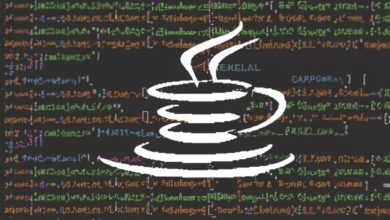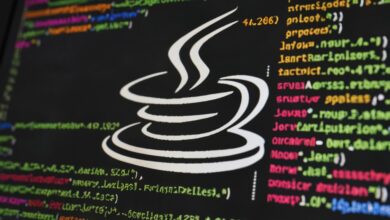
Collections In Java Interview Questions and Answers
Java’s Collections Framework is a treasure trove of data structures and algorithms, empowering you to organize, manipulate, and efficiently access your data. Nailing your understanding of these tools is crucial for any Java developer, and aceding interview questions related to them can pave the way for your programming success. This article equips you with answers to commonly asked Collections Framework interview questions, from the fundamentals to advanced concepts, helping you shine during your next Java interview.
1. Understanding the Basics: Laying the Foundation
Q: What is the Collections Framework?
A: The Collections Framework in Java is a comprehensive set of interfaces and classes for managing collections of objects. It provides efficient structures like Lists, Sets, and Maps, along with algorithms for sorting, searching, and modifying these collections.
Q: What are the benefits of using the Collections Framework?
A: The framework offers numerous benefits:
- Improved Organization and Code Readability: Organize data efficiently, leading to cleaner and more maintainable code.
- Reduced Redundancy and Error-Prone Code: Utilize pre-built classes and algorithms instead of writing repetitive or error-prone code.
- Enhanced Performance and Efficiency: Choose the appropriate data structure and algorithm for optimal performance when working with large datasets.
- Flexibility and Reusability: Apply the framework to various tasks and problems, leveraging its versatile functionalities.
Q: What are the key interfaces in the Collections Framework?
A: Some key interfaces include:
Collection: Basic interface for all collections, specifying basic operations like adding, removing, and clearing elements.List: Ordered collection of elements allowing duplicates, accessed by index.Set: Unordered collection of unique elements, focusing on membership checks and set operations.Map: Key-value pairs, providing efficient lookup and retrieval based on unique keys.
2. Diving Deeper: Exploring Specific Data Structures
Q: When would you use an ArrayList versus a LinkedList?
A: Use ArrayList for fast random access (index-based retrieval) and efficient data addition at the end. Use LinkedList for efficient insertion and deletion in the middle of the list, although random access is slower.
Q: What are the different types of Sets?
A: Java offers various Set implementations:
HashSet: Fastest access and membership checks, but insertion order is not preserved.TreeSet: Elements are automatically sorted in ascending order, good for ordered access but insertions might be slower.LinkedHashSet: Insertion order is preserved along with fast membership checks, although slightly slower than HashSet.
Q: Why is HashMap considered the most common Map implementation?
A: HashMap offers a balance of fast key-based lookup and insertion due to its hashing mechanism. However, it allows duplicate keys with different values and order is not preserved.
3. Algorithm Savvy: Mastering Operations and Iterations
Q: How would you sort a List in Java?
A: You can use the Collections.sort() method, which utilizes the natural ordering of elements or a custom comparator for complex sorting logic.
Q: What are the differences between iterating with a for loop and an iterator?
A: Using a for loop is simpler but lacks flexibility. Iterators allow for concurrent modification of the collection while iterating, providing more control and safety.
Q: Explain the concept of Comparable and Comparator interfaces.
A: Comparable defines how an object compares itself to others, while Comparator defines how two objects are compared by an external entity. Both are used for sorting operations.
4. Beyond the Basics: Advanced Concepts and Best Practices
Q: What is Generics and how does it apply to Collections?
A: Generics allow specifying the type of elements a collection can hold, improving type safety, preventing runtime errors, and enhancing code readability.
Q: What are some best practices for using Collections in Java?
A:
- Choose the appropriate data structure for your needs, considering access patterns and performance requirements.
- Utilize Generics to ensure type safety and prevent runtime errors.
- Avoid modifying collections while iterating through them to prevent unexpected behavior.
- Leverage Streams API for concise and functional data manipulation tasks.
Q: How can you stay updated on the latest advancements in the Collections Framework?
A: Regularly check the Java documentation for new features and updates, explore open-source libraries and frameworks that build upon the Collections Framework, and keep yourself engaged in the Java developer community through forums and online resources.
5. Conclusion: Building Confidence and Mastering the Interview
By practicing with interview questions, exploring different data structures and algorithms, and honing your best practices, you can confidently showcase your understanding of the Collections Framework during your next Java interview. Remember, preparation, practice, and a positive attitude are key to acing any technical challenge.
Embrace the Challenge: Mastering the Collections Framework is a continuous journey. Don’t be afraid to tackle complex concepts and delve deeper into advanced topics. Remember, with every question answered and every challenge overcome, you become a more skilled and confident Java developer.
Keep Exploring: The world of Java collections is vast and ever-evolving. Stay curious, explore new libraries and frameworks, and keep learning. Join online communities, participate in coding challenges, and network with other developers to expand your knowledge and sharpen your skills.
The Collections Framework is more than just a set of tools; it’s a gateway to efficient and elegant Java programming. So, unlock its potential, embrace the challenge, and keep coding your way to success! Remember, the journey towards mastering Java awaits, and the Collections Framework is your trusty companion on that exciting path.
I hope this comprehensive guide to Collections Framework interview questions equips you with the knowledge and confidence to shine in your next interview. Feel free to write any further questions you might have about specific concepts or practices in the comment section. CodeForHunger is here to help you navigate the world of Java collections and conquer any coding challenge that comes your way!




